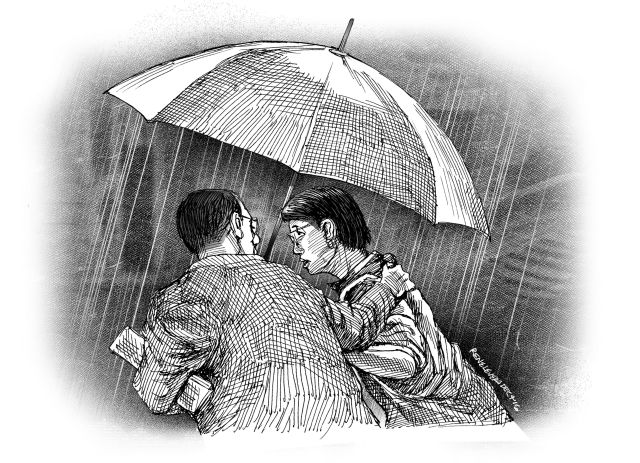
December. This year, the night of the eve of the first day, the wife and I found ourselves in the midst of a rainstorm on our way to visit my mother-in-law. Luckily, we had kept rubber boots and Macintoshes in the car, and they kept our bodies and feet dry as we trudged in ankle-deep water.
I thought of the 16-century Dutch painter, Pieter Bruegel the Elder, who made a series of paintings depicting the months of the year. Only five of the paintings—pertaining to January, February, July, August and November—have survived. Nobody knows if he came up with twelve paintings, and if he did how he had portrayed December.
If given the choice, for December, I would pick among his extant works “The Sermon of St. John the Baptist,” a panoramic rendition of the account in the Gospel of Matthew of the preaching of John the Baptist in the desert of Judea, during which he urged the people, “Repent, for the kingdom of heaven is at hand!”
Matthew observes that earlier the prophet Isaiah had alluded to John, calling him “the voice of one crying in the desert,” imploring everyone to “prepare the way of the Lord, make straight his paths.”
Pieter Bruegel the Elder made it a point to sketch the simple folk, in aid of which he himself dressed as a bumpkin and mixed with the peasants.
Naturally, he gave “The Sermon of St. John the Baptist” a local village setting at the edge of a forest. But it takes time for the viewer to find John in the painting, which appears to focus on the crowd. Although a Catholic, Bruegel, who lived during the height of the Reformation, might have picked the scene from the throngs that gathered outside the city limits to listen to Calvinist preachers.
Matthew describes John as wearing clothing made of camel’s hair and a leather belt around his waist. In Bruegel’s painting, John wears brown robes—a small, gesturing figure in the midst of a multitude, most of whom we see from behind, the gamut of whose reactions runs from attentive, bored and drowsy—a motley of all sorts of characters—monks, gypsies, muslims—suggesting the universal character of the Gospel.
Most everyone came out to receive baptism from John, even the Pharisees and Sadducees, to whom John said, “You brood of vipers! Who warned you to flee from the coming wrath? Produce good fruit as evidence of your repentance.”
Harder to make out in the painting is the figure of Jesus, who wears bluish robes and stands behind John. Matthew writes that John said of Jesus,
“The one who is coming after me is mightier than I. I am not worthy to carry his sandals. He will baptize you with the holy Spirit and fire. His winnowing fan is in his hand. He will clear his threshing floor and gather his wheat into his barn, but the chaff he will burn with unquenchable fire.”
What we could miss in the picture as well, because of its haziness, is the baptism going on at bend of the river. Someone remarked that Bruegel laid out spiritual events in a manner that was all but invisible, perhaps stressing their character as objects of revelation and faith, which often occur while we carry on with our ordinary lives, and which we tend to miss, a situation not much different from that of Icarus in another Bruegel painting, which W. H. Auden immortalized in his poem, “Musee des Beaux Arts.” Of Icarus’ fall from the sky Auden wrote:
…how everything turns away
Quite leisurely from the disaster; the ploughman may
Have heard the splash, the forsaken cry,
But for him it was not an important failure; the sun shone
As it had to on the white legs disappearing into the green
Water; and the expensive delicate ship that must have seen
Something amazing, a boy falling out of the sky,
had somewhere to get to and sailed calmly on.
I tried listening to December when it entered, like a traveller on a rainy night. It seemed like the right spiritual attitude. To listen to the voice of one crying in the desert means to pay attention. And, as the poet Mary Oliver said, “To pay attention, this is our endless and proper work.”